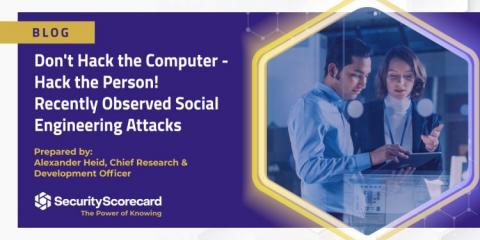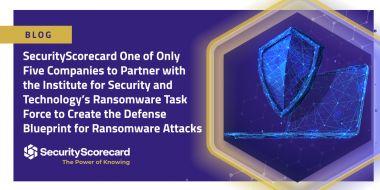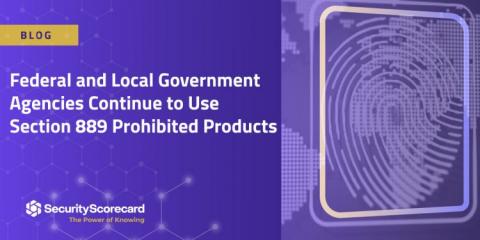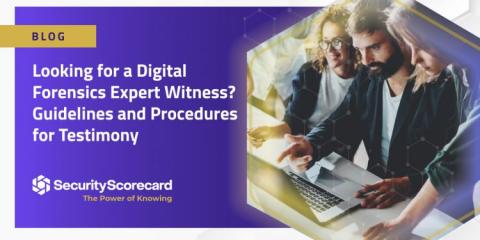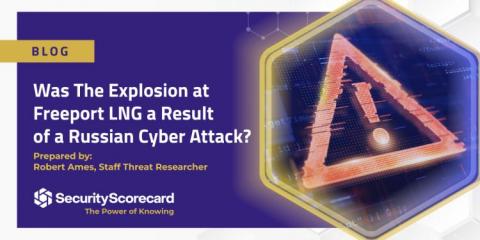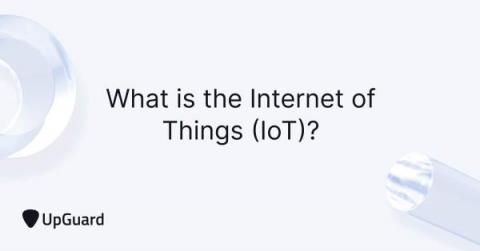Security | Threat Detection | Cyberattacks | DevSecOps | Compliance
Risk Management
Don't Hack the Computer - Hack the Person! Recently Observed Social Engineering Attacks
When most people think about the origin of a cyberattack, the image is that of a hacker using some kind of exploit against software or hardware in order to gain unauthorized access to systems. The hacker is seeking data to exfiltrate and monetize, either through re-sale on the darknet or extortion through ransomware.
Vulnerability Scans Are a Must but Not Enough
SecurityScorecard Is One of Only Five Organizations to Partner with the Institute for Security and Technology's Ransomware Task Force to Create the Blueprint for Ransomware Defense
On August 4, the Institute for Security and Technology’s (IST) Ransomware Task Force (RTF) announced the release of its Blueprint for Ransomware Defense - a clear, actionable framework for ransomware mitigation, response, and recovery aimed at helping organizations navigate the growing frequency of attacks.
Federal and Local Government Agencies Continue to Use Section 889 Prohibited Products
Section 889 of the John S. McCain National Defense Authorization Act (NDAA) for Fiscal Year (FY) 2019 prohibits the procurement or use of Huawei, ZTE, Hytera, Hikvision, or Dahua telecommunication and video surveillance products and services by federal agencies, government contractors, and the recipients of any federal grants or loans (this latter category includes many state and local governments).
Using Business Analytics for Risk Performance Management
All You Wanted to Know About Data Security Fabric
Looking for a Digital Forensics Expert Witness? Guidelines and Procedures for Testimony
In 2022, a lot of crime involves a digital element. The digital element can be anything from text messages to complex cyber attacks on organizational networks. If you're prosecuting, a digital forensics expert can help you build a stronger case by gathering and documenting evidence and testifying in court on their findings.
Was the Explosion at Freeport LNG a Result of a Russian Cyber Attack?
On June 8, an explosion took place at Freeport LNG’s liquefied natural gas (LNG) export facility in Quintana, Texas. The company later explained that the explosion resulted from a rupture in an over-pressurized pipeline, but did not comment as to how the pressure built up enough to cause such a rupture. In the wake of the explosion, Freeport reported that the outage resulting from it would persist until September, after which the facility would only resume partial operations.
What is the Internet of Things (IoT)? Definition and Critical Risks
The internet of things (IoT) is a system of interconnected computers, devices, digital machines, and objects, all marked with unique identifiers (UIDs) and enabled to transfer and share data over a network. It was first coined by Kevin Ashton in 1999 when he envisioned a future where things communicated with each other, apart from human interaction With the evolution of web-enabled smart homes and smart devices in nearly every corner of life, IoT attack surfaces begin to emerge.



